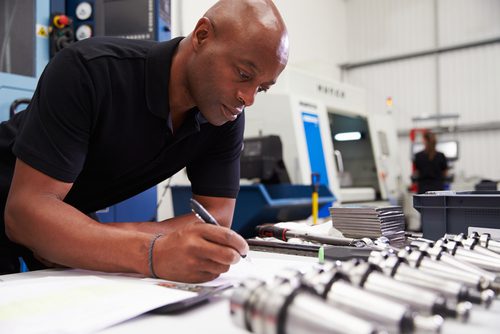Precision CNC machining is a manufacturing process that uses computer-controlled machines to create highly precise parts and components. From medical devices to aerospace components, precision CNC machining is used in a wide range of industries to produce high-quality, reliable products. In this article, we will explore the benefits of precision CNC machining, its applications, and how it works.
Benefits of Precision CNC Machining
Precision CNC machining offers several benefits over traditional machining methods, including:
- Precision: CNC machines are highly accurate, with tolerances as tight as 0.0001 inches, making them ideal for creating complex parts and components that require high precision.
- Speed: CNC machines are faster than traditional machining methods, allowing for faster production times and shorter lead times.
- Flexibility: CNC machines can be programmed to create a wide range of parts and components, making them suitable for a variety of industries.
- Quality: CNC machines produce high-quality parts and components that are consistent and reliable, reducing the risk of errors and defects.
- Cost-Effectiveness: While CNC machines can be expensive to purchase and operate, they offer cost savings in the long run by reducing labor costs and increasing productivity.
Applications of Precision CNC Machining
Precision CNC machining is used in a wide range of industries, including:
- Aerospace: Precision CNC machining is used to create complex aerospace components that require high precision and durability.
- Medical: Precision CNC machining is used to create medical implants, prosthetics, and other medical devices that require high precision and quality.
- Automotive: Precision CNC machining is used to create engine blocks, transmission cases, and other critical automotive components.
How Precision CNC Machining Works?
Precision CNC machining works by using computer-controlled machines to remove material from a workpiece to create a finished part or component. Here’s how it works:
- Design: The first step in precision CNC machining is to create a 3D model of the part or component using computer-aided design (CAD) software.
- Programming: The CAD model is then used to program the CNC machine, which controls the movement of the cutting tools.
- Machining: The CNC machine removes material from the workpiece using cutting tools such as drills, mills, and lathes.
- Finishing: Once the part or component is machined, it is finished using a variety of techniques such as deburring, sanding, and polishing.
FAQs
Q: What materials can be used in precision CNC machining? A: Precision CNC machining can be used with a wide range of materials, including metals, plastics, and composites.
Q: What is the difference between CNC machining and manual machining? A: CNC machining is a computer-controlled process that is faster and more accurate than manual machining, which is done by hand using manual tools.
Q: How long does precision CNC machining take? A: The time it takes for precision CNC machining depends on the complexity of the part or component and the size of the production run.
Conclusion
Precision CNC machining is a highly accurate, reliable, and cost-effective manufacturing process that is used in a wide range of industries to produce high-quality parts and components. By using computer-controlled machines, precision CNC machining offers unparalleled precision, speed, flexibility, and quality, making it the preferred choice for many businesses. Whether you are in the aerospace, medical, or automotive industry, precision CNC machining can help you create products that meet the highest standards of quality and reliability. So, if you’re looking for a manufacturing process that can take your business to the next level, consider precision CNC machining.

0 Comments